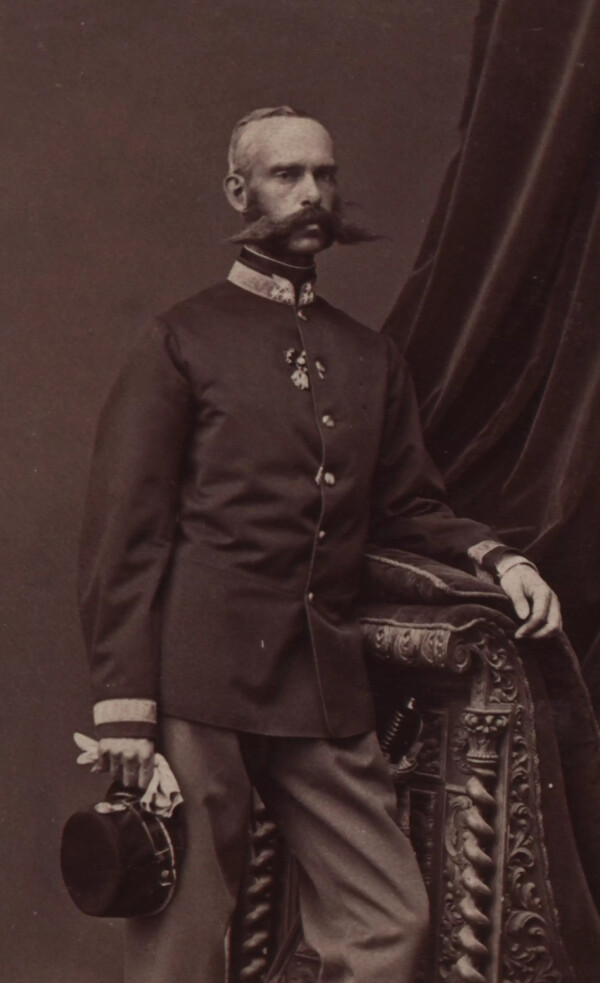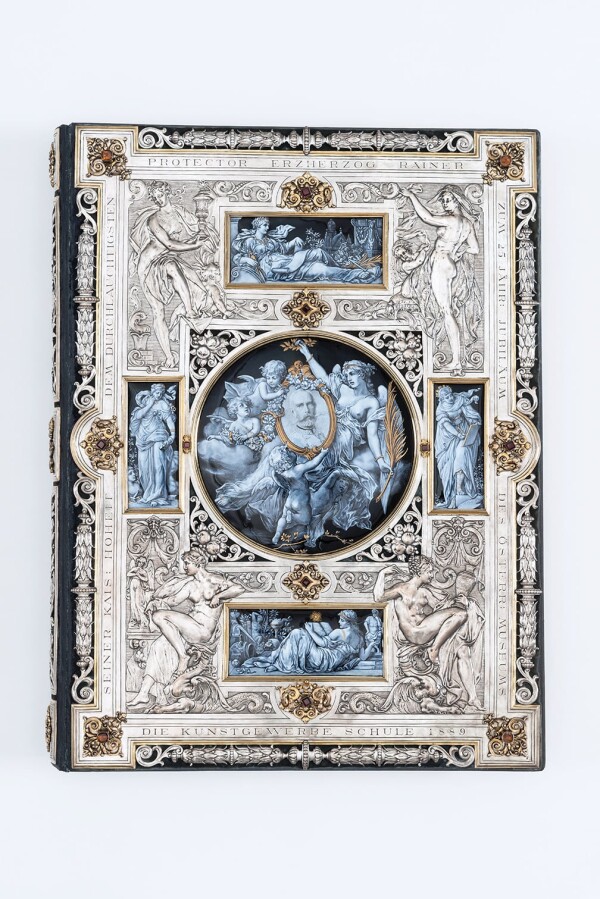Archduke Rainer

Archduke Rainer photographed by Adele Perlmutter, 1871, Wien Museum
© Wien Museum

Commemorative publication on the occasion of the 25th anniversary of the Imperial and Royal Austrian Museum of Art and Industry, 1889, MAK - Museum of Applied Arts
© MAK
Archduke Rainer of Austria was a member of the imperial family and active as a politician and a patron of science and the arts. In the 1860s, he took on the patronage of the newly founded Imperial-Royal Museum of Art and Industry in Vienna.
Archduke Rainer of Austria was born in Milan in 1829. He was the son of the Viceroy of Lombardy-Venetia. His childhood was spent in Lombardy. In 1843, he joined the army in Vienna, reaching the military rank of lieutenant field marshal. He was later also appointed High Commander of the Imperial-Royal Landwehr as well as Feldzeugmeister. From the 1850s, his political career intensified, when Emperor Franz Joseph I made Archduke Rainer the president of the Imperial Council. A few years later he also served as nominal prime minister and subsequently became a member of the Austrian House of Lords.
A patron of science and the arts
The politician was active as a philanthropist and as an important patron of science and the arts in Austria: As a curator and honorary member of the Imperial Academy of Sciences, he made a sizable donation to the institution for the purpose of financing expeditions. He also bought an extensive collection of papyri from Egypt, which is still preserved at the Austrian National Library today. Furthermore, he was the president of the 1873 Vienna World’s Fair.
He also took on the patronage of the Imperial-Royal Austrian Museum of Art and Industry (now MAK – Museum of Applied Art, Vienna). The founding of this new cultural institution in Vienna was initiated by the art historian Rudolf Eitelberger together with the Archduke. On the occasion of the museum’s 25th anniversary, Archduke Rainer was awarded with an homage address on 24 June 1889. The address was designed and executed by teachers and students of the Vienna School of Arts and Crafts, including Gustav Klimt, Ernst Klimt and Franz Matsch. According to a report published in the museum’s journal Mittheilungen des k. k. Oesterreichischen Museums für Kunst und Industrie, Archduke Rainer thus expressed his thanks:
“I have had […] the opportunity to observe the development of the museum and the school of arts and crafts and I have seen how far this institute has risen. […] Gentlemen, I ask you to continue in this direction and to keep the museum and the institute at their present height.”
The politician also assured those present that he would continue to act in the interest of the institution. The report in the museum journal reveals that Archduke Rainer inspected the homage address in the presence of the school board and all artists involved, who were also personally introduced to him.
Archduke Rainer remained the patron of the Austrian Museum of Art and Industry until about ten years later, when he gradually retired from public appearances during the last few years of his life. The esteemed patron died in 1913; he was laid to rest in Vienna’s Imperial Crypt.
Literature and sources
- Historische Kommission bei der Bayerischen Akademie der Wissenschaften (Hg.): Neue Deutsche Biografie, Band 21, Berlin 2003, S. 122.
- N. N.: Der Lebenslauf Erzherzog Rainers, in: Politische Chronik der österreichisch-ungarischen Monarchie, Heft 1 (1913), S. 1-6.
- N. N.: Eine Huldigungsgabe für den Erzherzog Rainer, in: Mittheilungen des k. k. Österreichischen Museums für Kunst und Industrie. Monatsschrift für Kunst und Gewerbe, N.F., 4. Jg., Heft 43 (1889), S. 409-411.
- Reichspost, 28.01.1913, S. 1-4.
- Felix Czeike (Hg.): Historisches Lexikon Wien, Band 4, Vienna 1995, S. 628.
- Österreichische Akademie der Wissenschaften (Hg.): Österreichisches Biographisches Lexikon 1815–1950, Band 8, Vienna 1983, S. 396.
- Wilhelm Mrazek: Die Huldigungsgabe der Kunstgewerbeschule an Erzherzog Rainer aus Anlass des 25jährigen Jubiläums des k. k. Österreichischen Museums im Jahre 1889, in: Alte und moderne Kunst. Österreichische Zeitschrift für Kunst, Kunsthandwerk und Wohnkultur, 23. Jg., Heft 158 (1978), S. 13-16.

